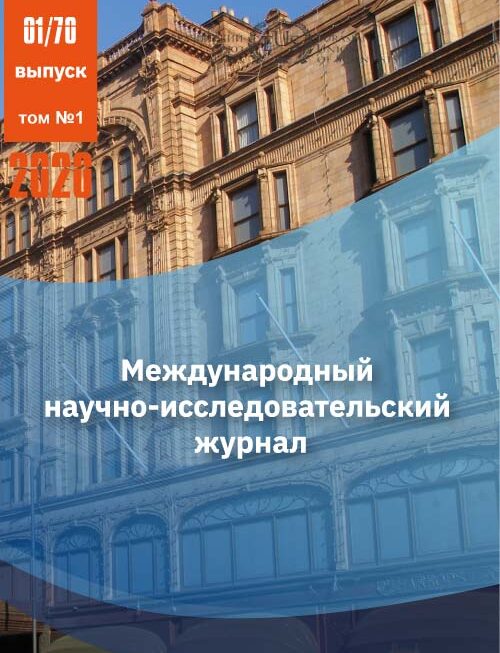COMPARATIVE ESTIMATION OF THE ADAPTIVE POTENTIAL OF WINTER RYE VARIETIES BY THE PROTEIN CONTENT IN THE GRAIN IN THE CONDITIONS OF THE LENINGRAD REGION
Abstract
For the period 2012-2017, the calculation and analysis of the adaptability parameters based on the "protein content in grain" was made. The average protein content in the grain of the tested winter rye varieties in the NorthWest region was 10.3% and varied from 8.7% to 12.2%, depending on the environmental conditions and hereditary characteristics of the varieties. Increased protein content was observed in 2012, 2013, and 2016 (10.7%, 11.9%, and 12.2%, respectively). Analysis of the average protein content in grain showed that Ilmen, Vavilovskaya, Krasnoyarsk universal, New Era, and Yantarnaya varieties exceeded the standard Era variety by (1.0-10.0%). The results of a ranking assessment of the adaptive capacity of nine new varieties using four common methods indicate an objective possibility of identifying and introducing environmentally plastic varieties into production. According to these parameters, winter rye varieties are more resistant to limiting environmental factors in terms of grain quality: Krasnoyarsk universal, Yantarnaya, Vavilovskaya, Nika 3 varieties are intended for use for food, feed and technical purposes in the North-Western region of Russia.
References
Гончаренко А.А. Актуальные вопросы селекции озимой ржи // М., 2014. [Goncharenko A. A. Actual issues of winter rye selection // Moscow, 2014 (In Russ).]
Государственный реестр селекционных достижений, допущенных к использованию: сорта растений// МСХ РФ ФГУ Государственная комиссия РФ. – М., 2015. [State register of selection achievements approved for use: plant varieties // Ministry of agriculture of the Russian Federation Federal State Commission of the Russian Federation. - Moscow, 2015 (In Russ).]
Пономарева М.Л., С.Н. Пономарев, Г.С. Маннапова, Л.Ф. Гильмуллина. Особенности селекции озимой ржи на адаптивность в Республике Татарстан // Достижения науки и техники АПК. 2015. Т.29. №5. С. 11-14. [Ponomareva M. L., S. N. Ponomarev, G. S. Mannapova, L. F. Gilmullina. Features of selection of winter rye for adaptability in the Republic of Tatarstan // Achievements of science and technology of agriculture. 2015; 29(5): 11-14. (In Russ).]
Кобылянский В.Д., Солодухина О.В. Селекция зернофуражной озимой ржи //Достижения науки и техники АПК. 2012. №6. С.31-34. [ Kobylyansky V. D., Solodukhina O. V. Selection of grain-fodder winter rye //Achievements of science and technology of agriculture. 2012; (6): 31-34. (In Russ).]
Кобылянский В.Д., Сафонова И.В., Солодухина О.В., Аниськов Н.И. Изучение и сохранение мировой коллекции ржи // Методические указания // СПб, ВИР, 2015. с. 44. [Kobylyansky V. D., Safonova I. V., Solodukhina O. V., Aniskov N. I. Study and preservation of the world collection of rye // Methodical instructions // SPb, VIR, 2015 (In Russ).]
Доспехов Б. А. Методика полевого опыта. М.: Агропромиздат, 1985. [Dospekhov B. A. Method of field experience. Moscow: Agropromizdat, 1985 (In Russ).]
Eberhart S.A. Stability parameters for comparing vatiiieties //S.A. Eberhart, W.A. Russell // Ctop. sci.1966;6 (1):36-40.
Драгавцев В.А., Цильке Р.А., Рейтер Б.Г. //Генетика признаков продуктивности яровой пшеницы в Западной Сибири. Новосибирск: Наука, 1984. [Dragavtsev V. A., Tsilke R. A., Reiter B. G. //Genetics of spring wheat productivity signs in Western Siberia. Novosibirsk, Nauka, 1984(In Russ).]
Wricke C. Under line method zur Ertassung der ecologischen Strenbreite in Feldversuchen / C. Wricke// Z. Ptlanrenruchtug. 1962; 47 (1):92-96.
Tai C.C. Genotypic stability and its application to Potato Regional trials / C.C. Tai// Crop Science.
CC BY-ND
A work licensed in this way allows the following:
1. The freedom to use and perform the work: The licensee must be allowed to make any use, private or public, of the work.
2. The freedom to study the work and apply the information: The licensee must be allowed to examine the work and to use the knowledge gained from the work in any way. The license may not, for example, restrict "reverse engineering."
2. The freedom to redistribute copies: Copies may be sold, swapped or given away for free, in the same form as the original.





